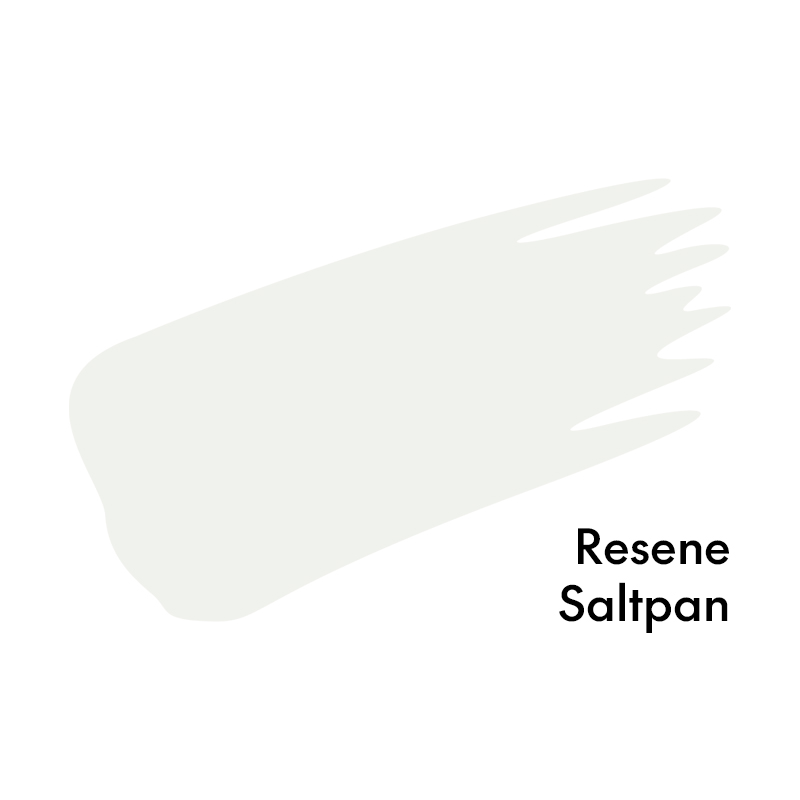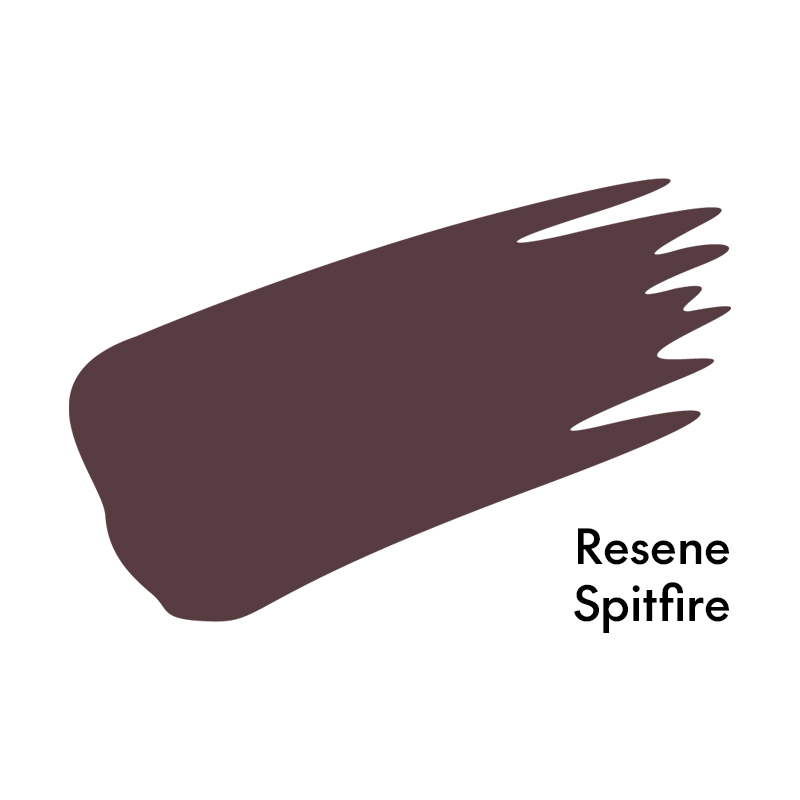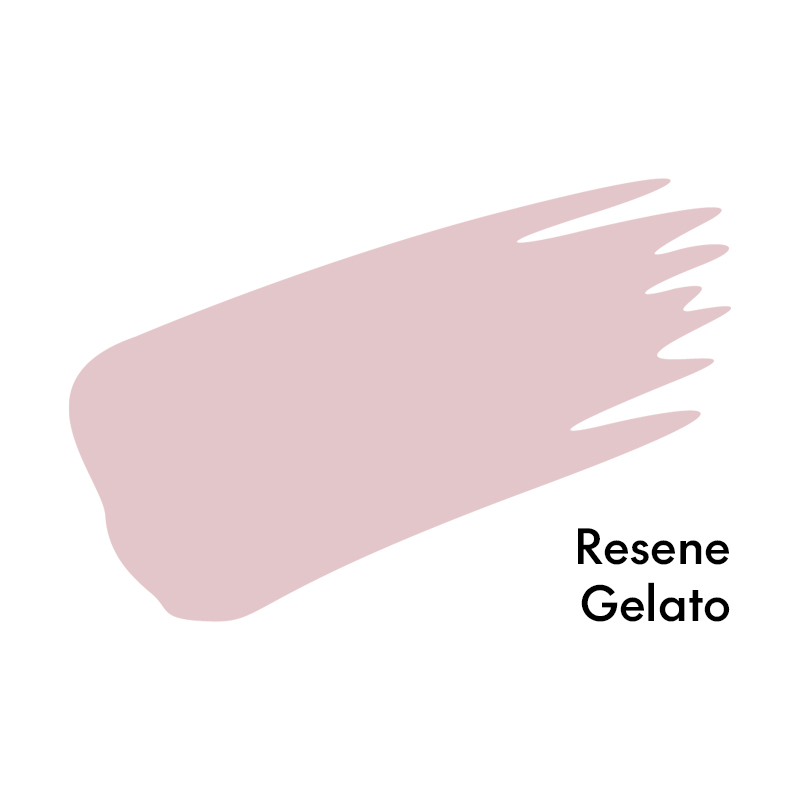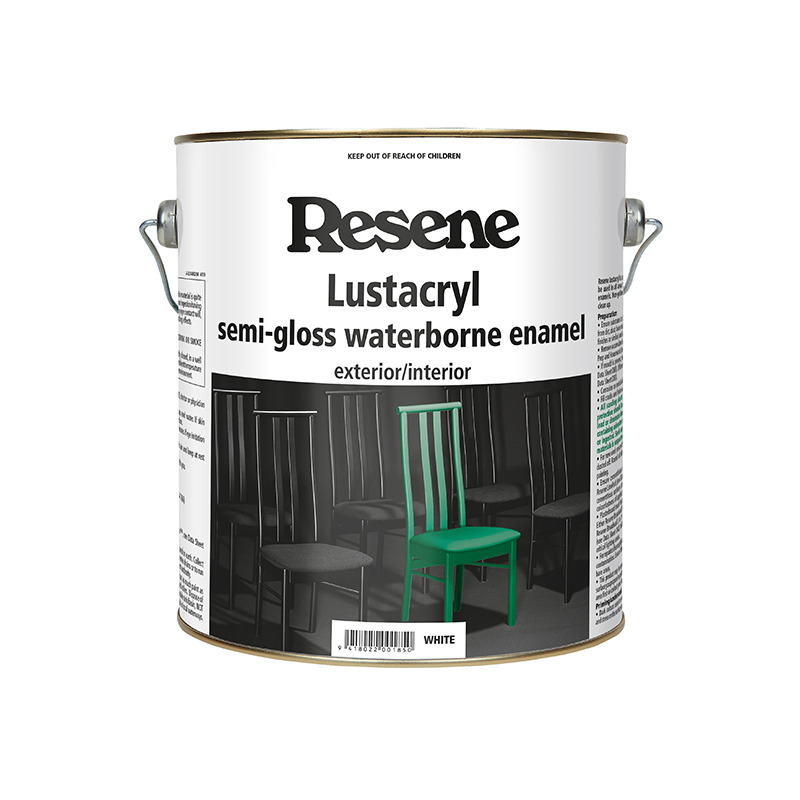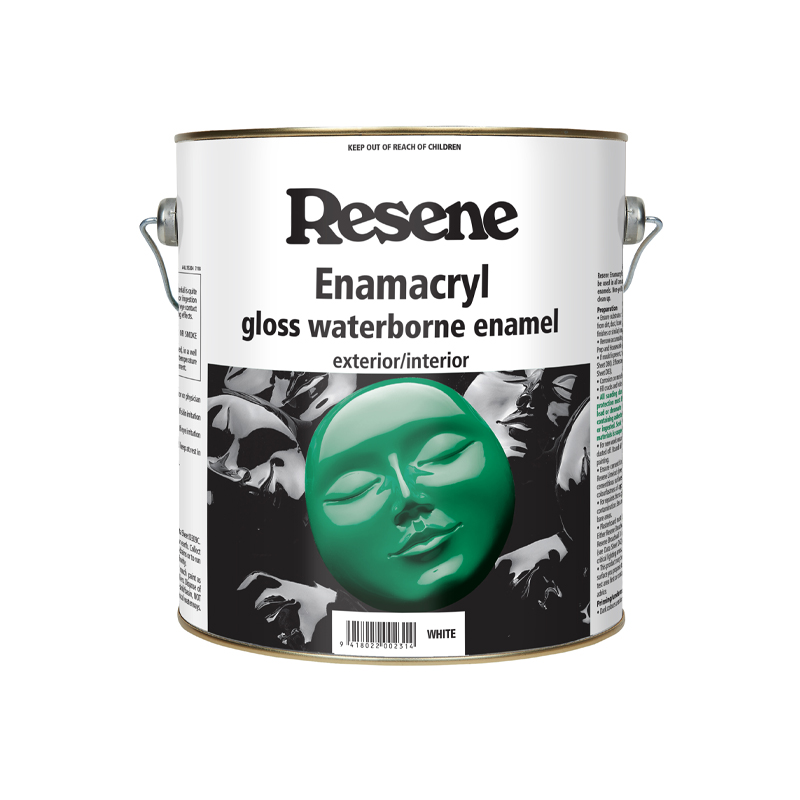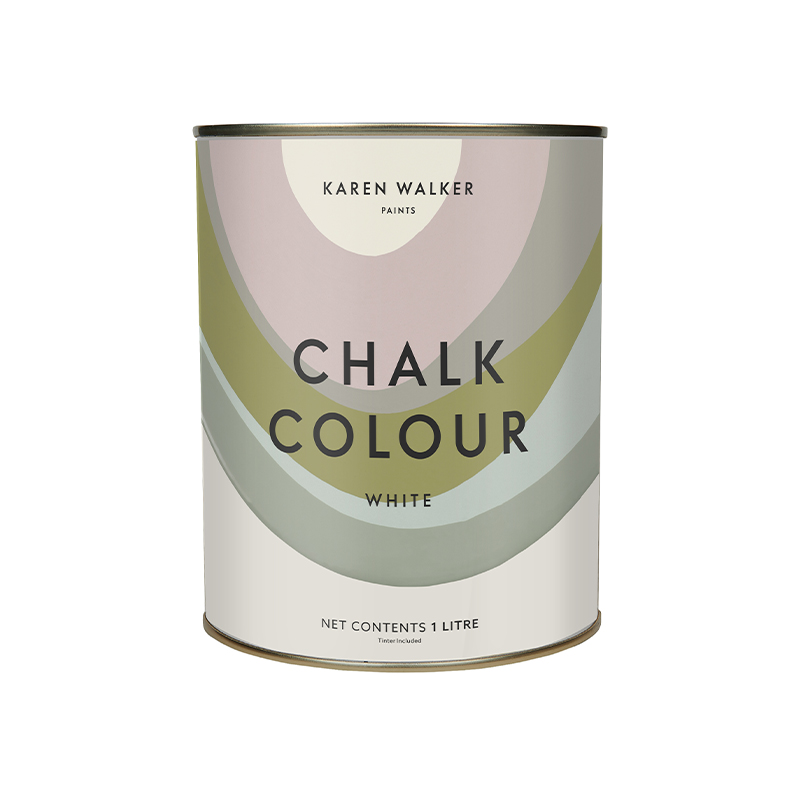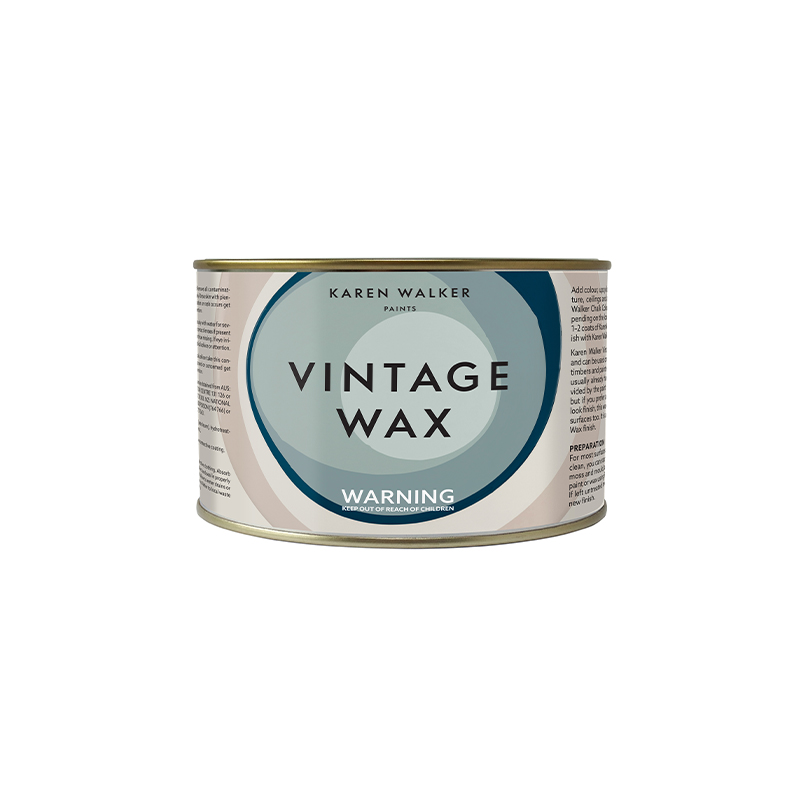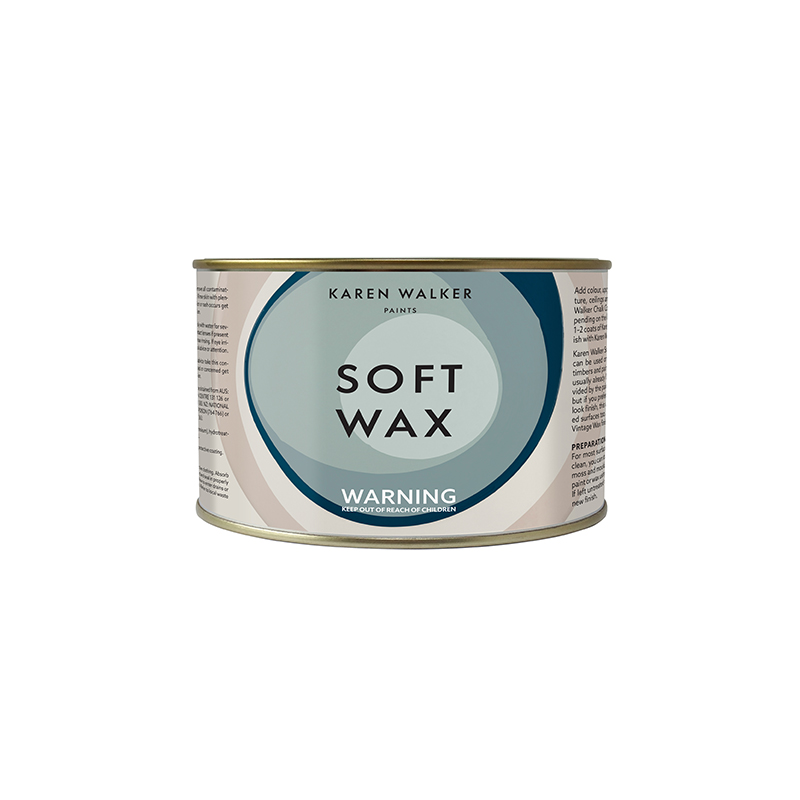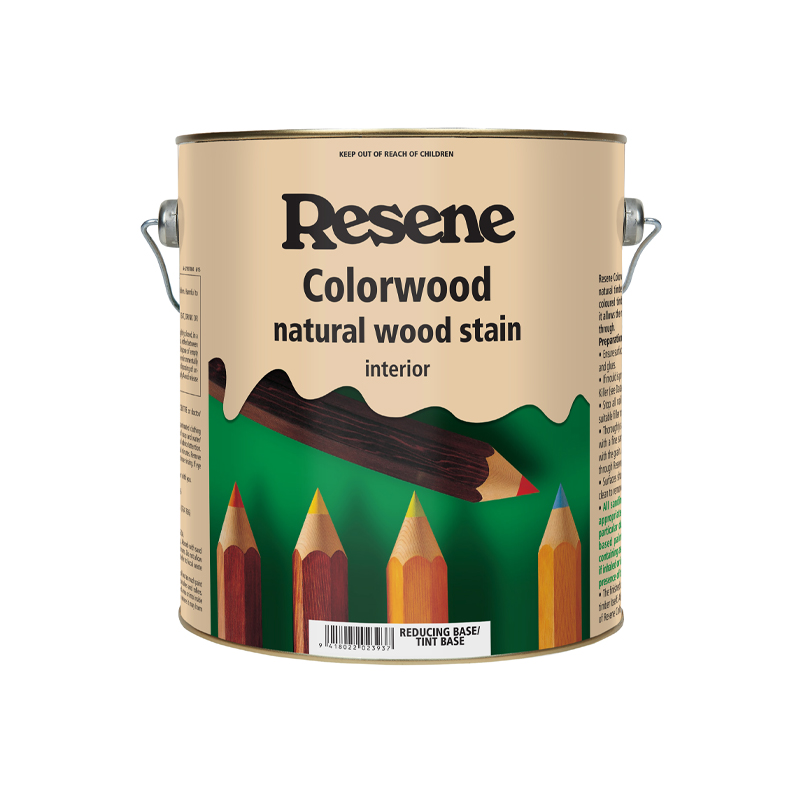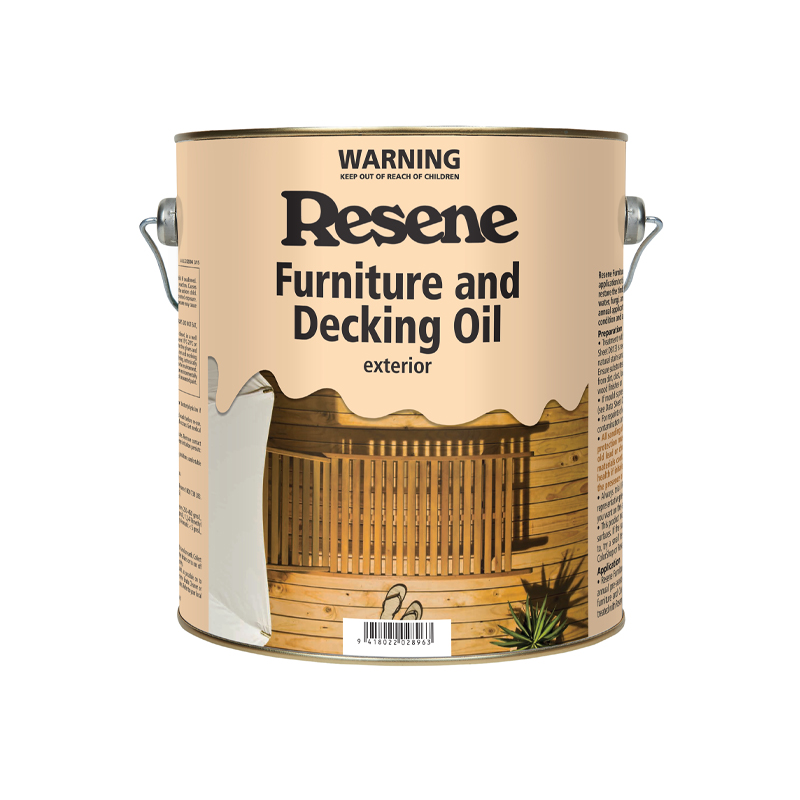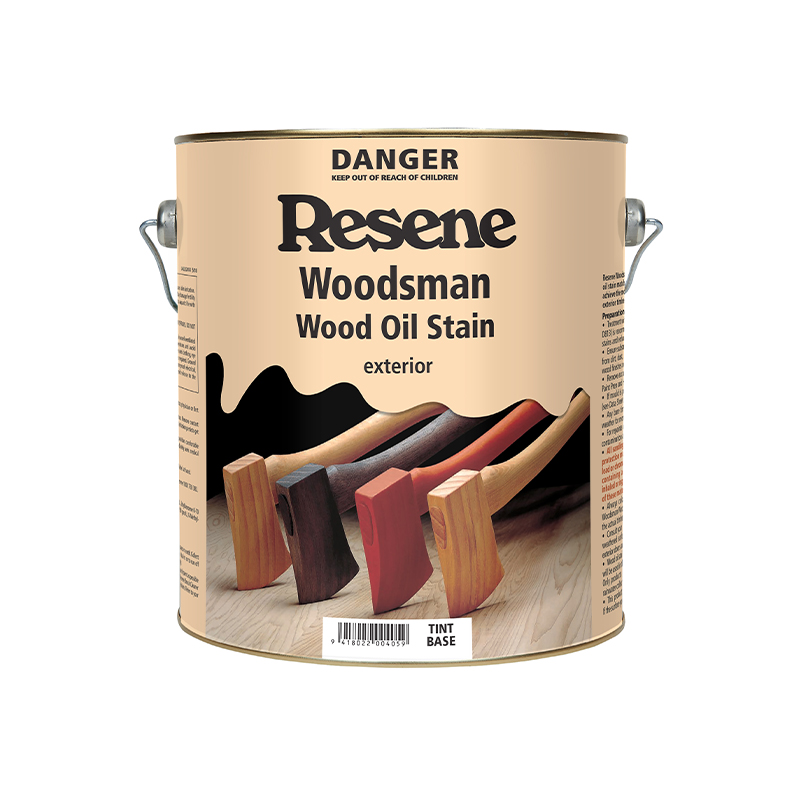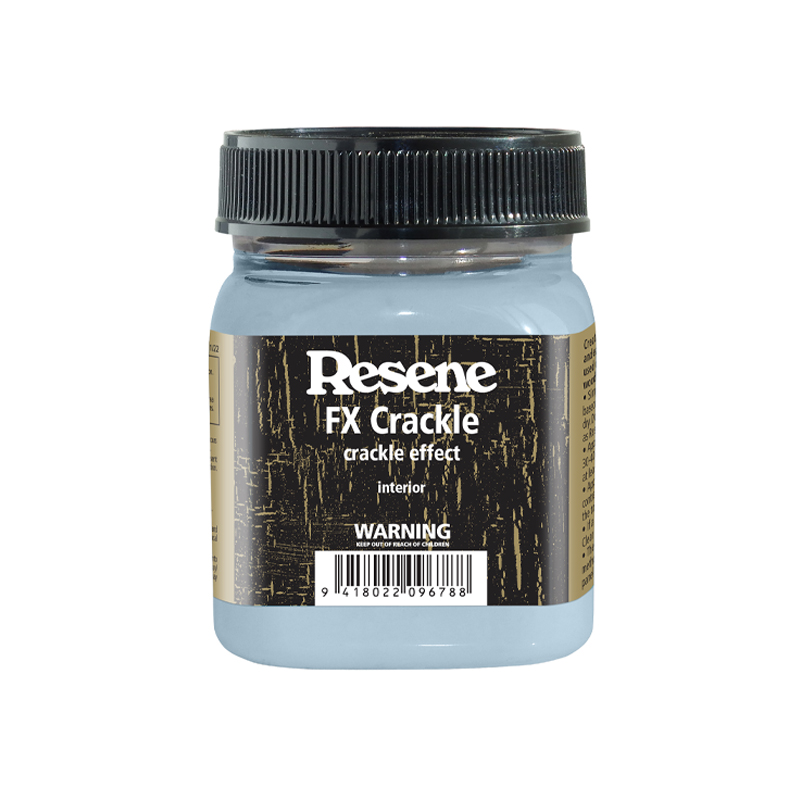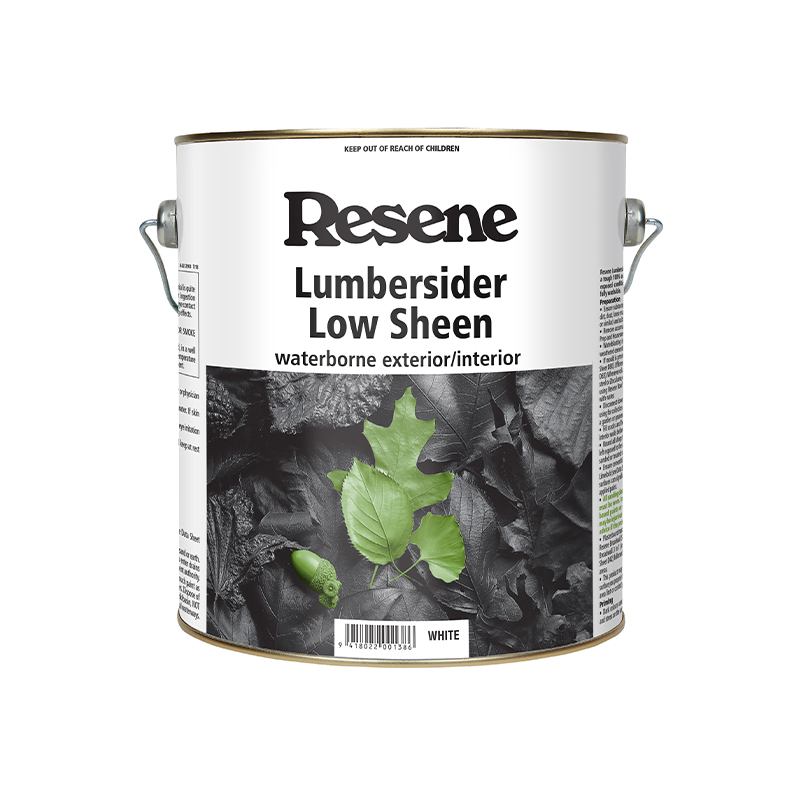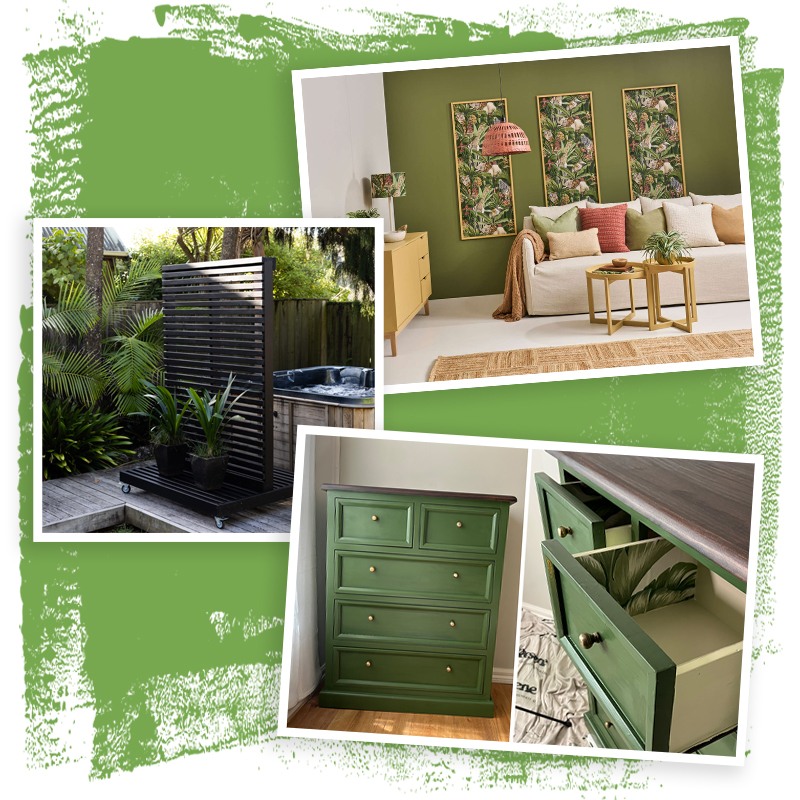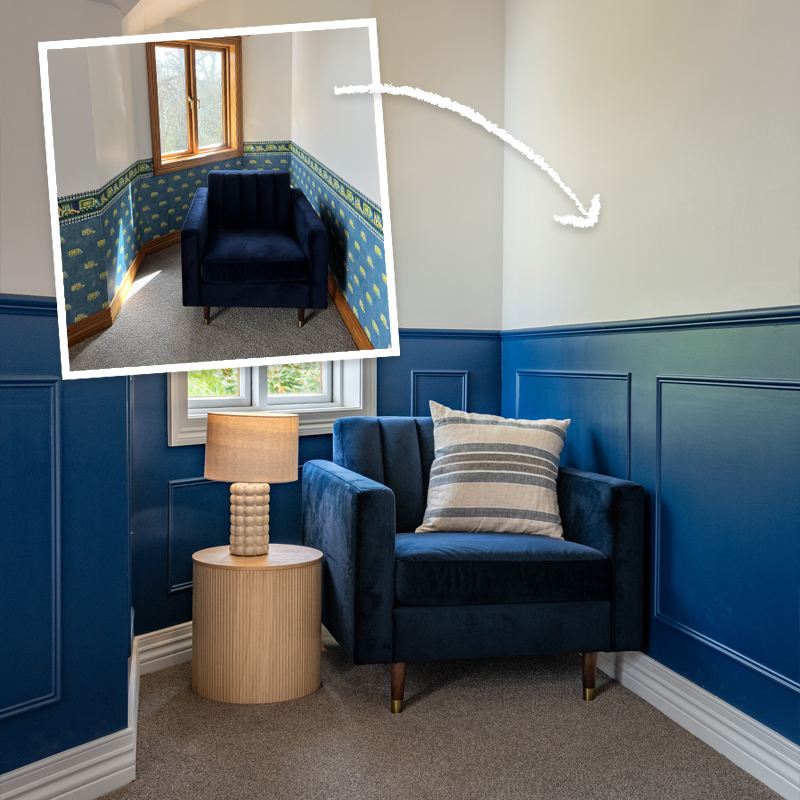More tips for easy furniture repair and rejuvenation
With the rising cost of living, these furniture upcycling tips will save you money, while also preventing waste going to landfill.
Which paint should I use when upcycling furniture?
Resene Lustacryl semi-gloss and Resene Enamacryl gloss are well suited for painting furniture. These Eco Choice-approved waterborne paints are hardwearing and durable and ideal for items such as chairs, which receive a lot of wear and tear. If you prefer a matte look, try Karen Walker Chalk Colour paint and wax.
How to restain an old table
To rejuvenate an old wooden dining or side table, sand back the surface using an electric sander, making sure all the varnish has been removed. Wipe away any dust using a clean, damp cloth. Apply Resene Colorwood natural wood stain using a paintbrush or speedbrush in smooth strokes, following the grain of the timber. Wipe off any excess stain.
Maintain a wet edge to avoid lap marks in the stain, and allow the first coat to dry before applying a second coat. Protect timber stained with Resene Colorwood by applying Resene Aquaclear waterborne urethane varnish using a brush and following the grain of the timber. Resene Colorwood and Resene Aquaclear are only suitable for indoor surfaces.
Which stain should I use on outdoor furniture?
To rejuvenate outdoor furniture, use Resene Furniture and Decking Oil for a lightly oiled look, Resene Woodsman wood oil stain for a coloured stain finish or Resene Timber and Furniture Gel for a non-drip option for fiddly furniture and small jobs.
Paint over a vase, jar or bowl
Bring new life into ageing or discoloured glass or plastic vases by applying one coat of Resene Waterborne Sureseal before painting with Resene Lustacryl semi-gloss waterborne enamel or Karen Walker Chalk Colour, available from Resene ColorShops. Or use leftover Resene testpots for your topcoats and paint a design to suit your room’s colour palette.
How to age or use an antique effect on furniture:
- Ageing with petroleum jelly: Before painting the furniture with either Resene Lustacryl or Resene Enamacryl, wipe small blobs of petroleum jelly on areas of the furniture that would naturally wear over time, such as edges, corners or handle. Then apply two coats of your paint. Once the paint is dry, wipe away the areas with petroleum jelly to expose the timber beneath before coating the bare timber and painted surfaces with Resene Aquaclear.
- Ageing with Resene FX Crackle: This special product creates the look of flaking paint. Simply paint one coat of Resene Lumbersider Low Sheen in your chosen colour and allow to dry, before applying one coat of Resene FX Crackle. Apply a final coat of paint in a colour that contrasts with the base colour. The Resene FX Crackle coating will shrink, causing the topcoat to crack and allowing the basecoat to show through.
- Ageing with Karen Walker Chalk Colour and Karen Walker Vintage Wax from Resene: Karen Walker Chalk Colour creates a matte finish that’s ideal for a soft-looking finish. To age your furniture, apply two coats of Karen Walker Chalk Colour and use a cloth to buff Karen Walker Vintage Wax, concentrating on the grooves and corners. For a softer look use Resene Karen Walker Soft Wax.
Furniture projects are the perfect opportunity to experiment with your paint and colour choices – you might just find yourself some new favourite finishes to use for other projects around your home.






